
Fundamentals
The journey into the profound essence of Hair Strand Integrity begins not with complex scientific diagrams, but with the very breath of life itself, echoing through the ages. We recognize the hair strand not merely as a collection of cells, but as a living testament to heritage, a delicate yet powerful filament spun from ancestral wisdom and the earth’s bounty. To speak of Hair Strand Integrity is to speak of the hair’s inherent strength, its flexibility, its capacity to retain the very moisture that allows it to flourish. It concerns the foundational robustness of each individual hair, from its emergence from the scalp to its furthest tip, a vitality that permits it to resist the countless influences it encounters daily.
When considering Hair Strand Integrity from its simplest meaning, we refer to the structural soundness of the hair. Imagine a single strand, slender yet resilient. At its core, this strand is a protein fiber, primarily composed of Keratin, a formidable protein also found in our skin and nails. This keratin forms a complex architecture, beginning with the outermost layer, the Cuticle.
This protective shield, a series of overlapping scales, guards the inner layers of the hair. When these scales lie flat and smooth, the hair strand possesses a natural sheen, reflecting light beautifully. It feels soft to the touch, and it resists tangling, signaling a state of good integrity.
Beneath the cuticle lies the Cortex, the heart of the hair strand. This region provides the hair’s primary strength and elasticity. It contains the majority of the hair’s keratin along with melanin, the pigment responsible for hair color. The cortex is where the hair’s natural curl pattern is determined, a magnificent genetic signature.
A hair strand with compromised integrity might exhibit a roughened cuticle, leading to a dull appearance, increased friction, and susceptibility to breakage. Such a strand struggles to retain moisture, leading to dryness and brittleness. This basic understanding provides the foundation for comprehending the more intricate aspects of hair health.
Hair Strand Integrity is the hair’s foundational robustness, a vitality allowing it to resist daily influences and maintain its inherent strength and flexibility.
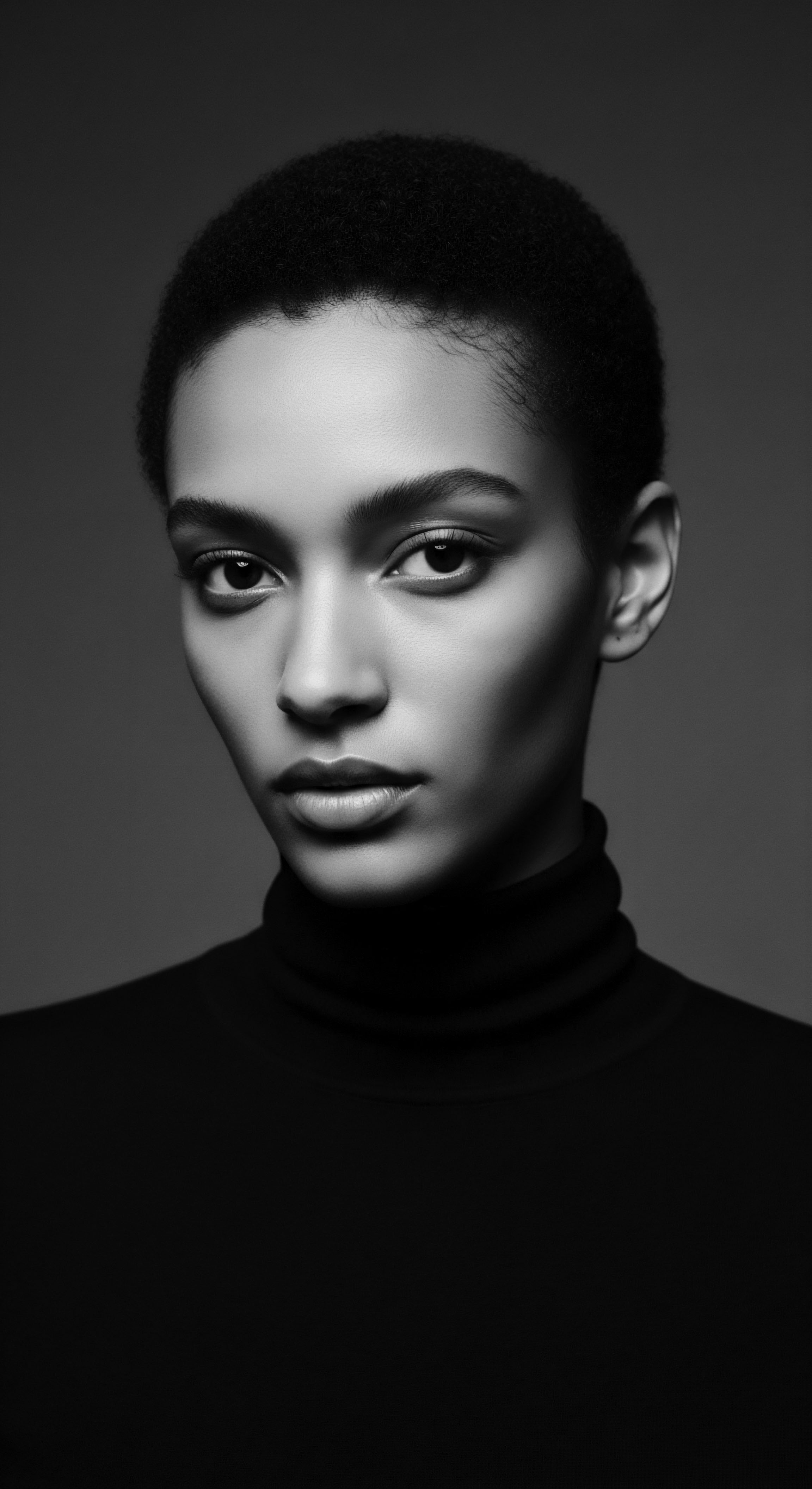
The Elemental Components ❉ A Gentle Introduction
Hair Strand Integrity, at its most elemental, is a delicate balance of nature’s design. The hair shaft, the visible portion extending beyond the skin, serves as a record, a silent scribe of its journey. Each segment, from the robust cuticle to the flexible cortex, contributes to the overall strength and well-being of the hair.
When these elements align in their natural state, the hair functions as nature intended, capable of bending, stretching, and returning to its original form without fracture. This elemental explanation forms the basis of all ancestral and modern hair care philosophies.
- The Cuticle ❉ This outermost layer consists of flattened, overlapping cells, much like shingles on a roof. A healthy cuticle lies smoothly, offering protection, reflecting light, and minimizing moisture loss.
- The Cortex ❉ Comprising the bulk of the hair’s mass, the cortex houses the keratin fibers and provides the hair’s tensile strength and elasticity. It dictates the curl pattern and color.
- The Medulla ❉ The innermost layer, often absent in finer hair types, the medulla’s precise function remains less understood, yet it contributes to the hair’s overall structure.
Ancestral practices, though not articulated in modern scientific terms, intuitively understood the need to preserve these components. The application of natural oils, butters, and herbs in traditional settings, for instance, often served to smooth the cuticle, reducing friction and enhancing moisture retention. This early comprehension of hair’s fragility and resilience laid the groundwork for care rituals passed down through generations, ensuring the Hair Strand Integrity was honored.
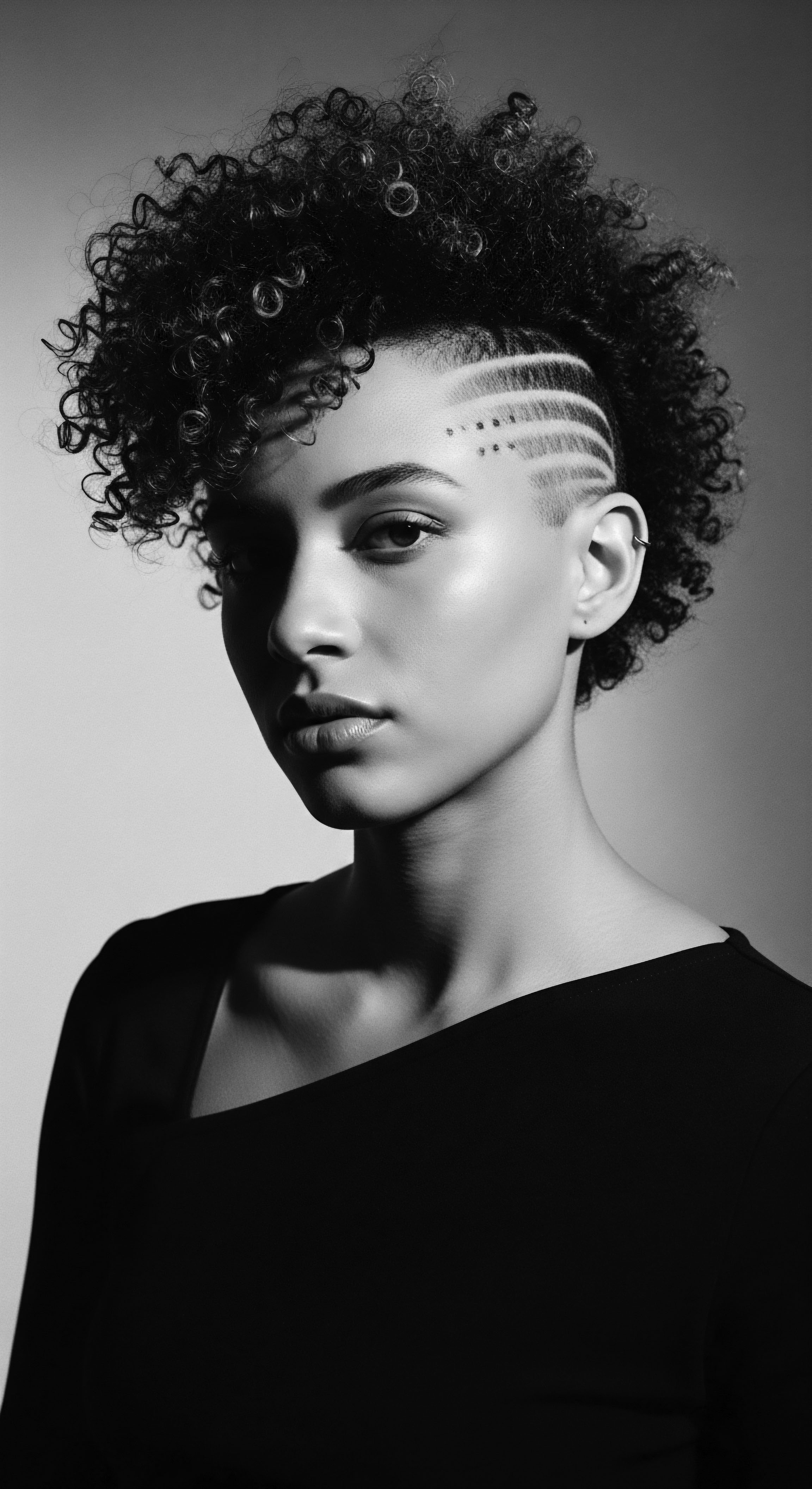
Initial Signs of Health and Distress
Observing a hair strand’s integrity begins with simple sensory awareness. Hair possessing robust integrity feels soft, pliable, and smooth between the fingers. It exhibits a natural elasticity, stretching gently before rebounding.
Its appearance is lustrous, with a healthy shine that speaks of well-aligned cuticles. Such hair handles daily manipulation and environmental exposure with graceful resilience.
Conversely, a hair strand beginning to lose its integrity may present a different sensation. It might feel rough or coarse, even brittle. A loss of elasticity manifests as stiffness, where the hair breaks rather than bends. The visual cues include dullness, frizz, and visible splits or fractures along the shaft.
These are immediate signals, inviting a closer look into the regimen of care and the environmental factors at play. Understanding these initial indications allows for timely, gentle intervention, preserving the delicate balance of the hair’s well-being.
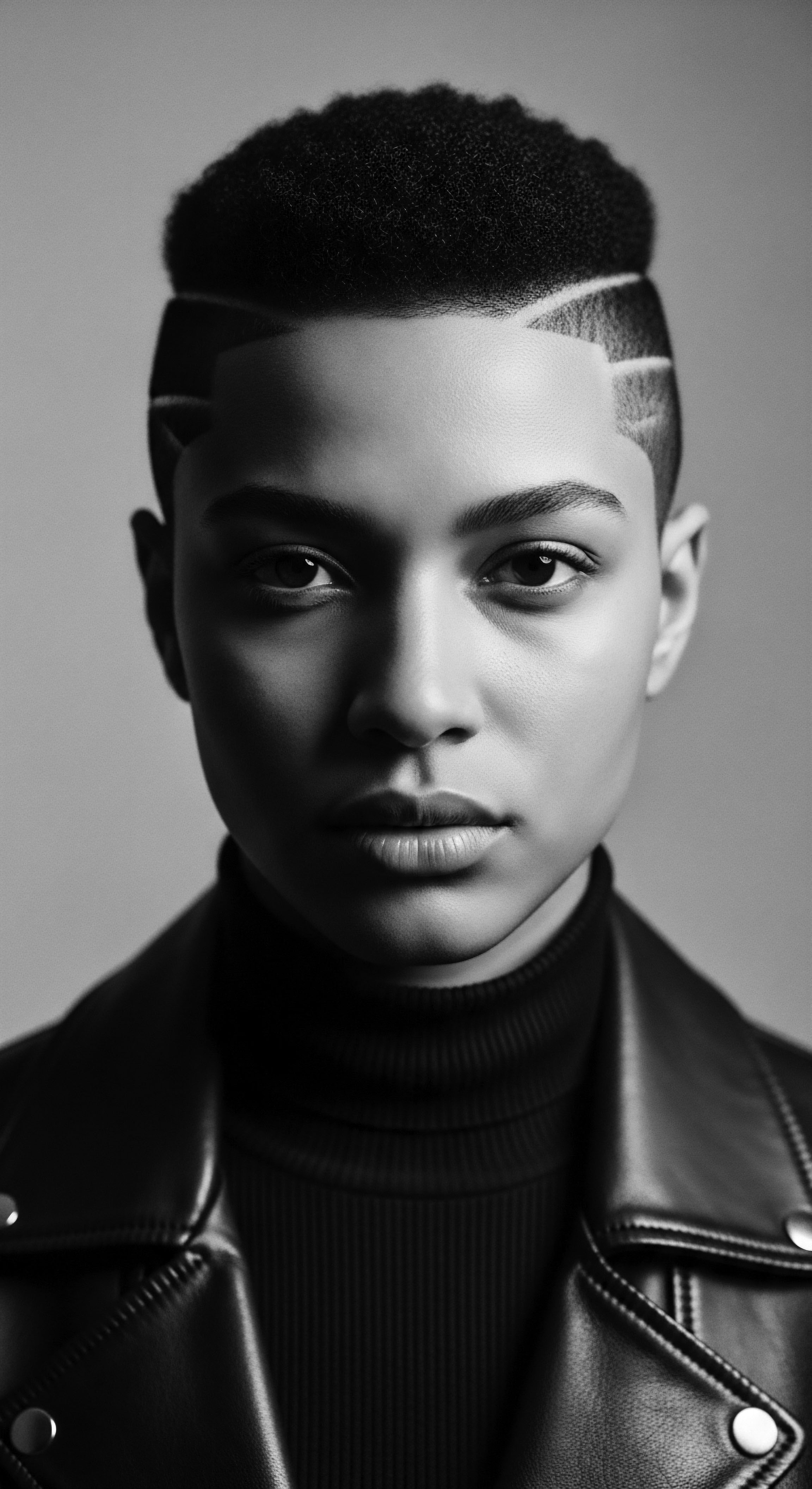
Intermediate
Building upon the foundational understanding, our exploration of Hair Strand Integrity deepens, inviting a more nuanced appreciation of its biological underpinnings and its profound connection to cultural practices. This perspective moves beyond the rudimentary to embrace the intricate dance between structural components, environmental forces, and the ancestral wisdom that has long guided the care of textured hair. Hair Strand Integrity, at this level, becomes an active state of being—a harmonious equilibrium where each part of the hair strand works in concert to maintain resilience, vitality, and beauty.
The meaning of Hair Strand Integrity expands to encompass not only the physical condition but also the hair’s functional capacity. This includes its ability to manage moisture, endure mechanical stress, and resist chemical alteration. The hair’s strength is not static; it is a dynamic property influenced by internal chemistry and external interactions. Specifically, the integrity of the cortex, with its dense network of Keratin Proteins and Disulfide Bonds, becomes a central focus.
These sulfur-sulfur bonds provide much of the hair’s structural rigidity and curl memory. Damage to these bonds, whether from excessive heat, harsh chemicals, or even prolonged mechanical stress, directly compromises the hair’s intrinsic strength, leading to breakage and altered curl patterns.
The hair’s ability to absorb and retain water, known as Porosity, also plays a crucial role in its integrity. Hair with high porosity, often due to a lifted or damaged cuticle, loses moisture rapidly, becoming dry, brittle, and susceptible to further damage. Conversely, hair with very low porosity might struggle to absorb moisture initially.
Ancestral care practices often addressed these very conditions, albeit without the scientific nomenclature. The long, patient process of oiling and massaging, for instance, helped to seal the cuticle and regulate moisture, instinctively working to enhance hair strand integrity.
Hair Strand Integrity reflects a dynamic equilibrium, essential for resilience, vitality, and the hair’s functional capacity to manage moisture and endure stress.
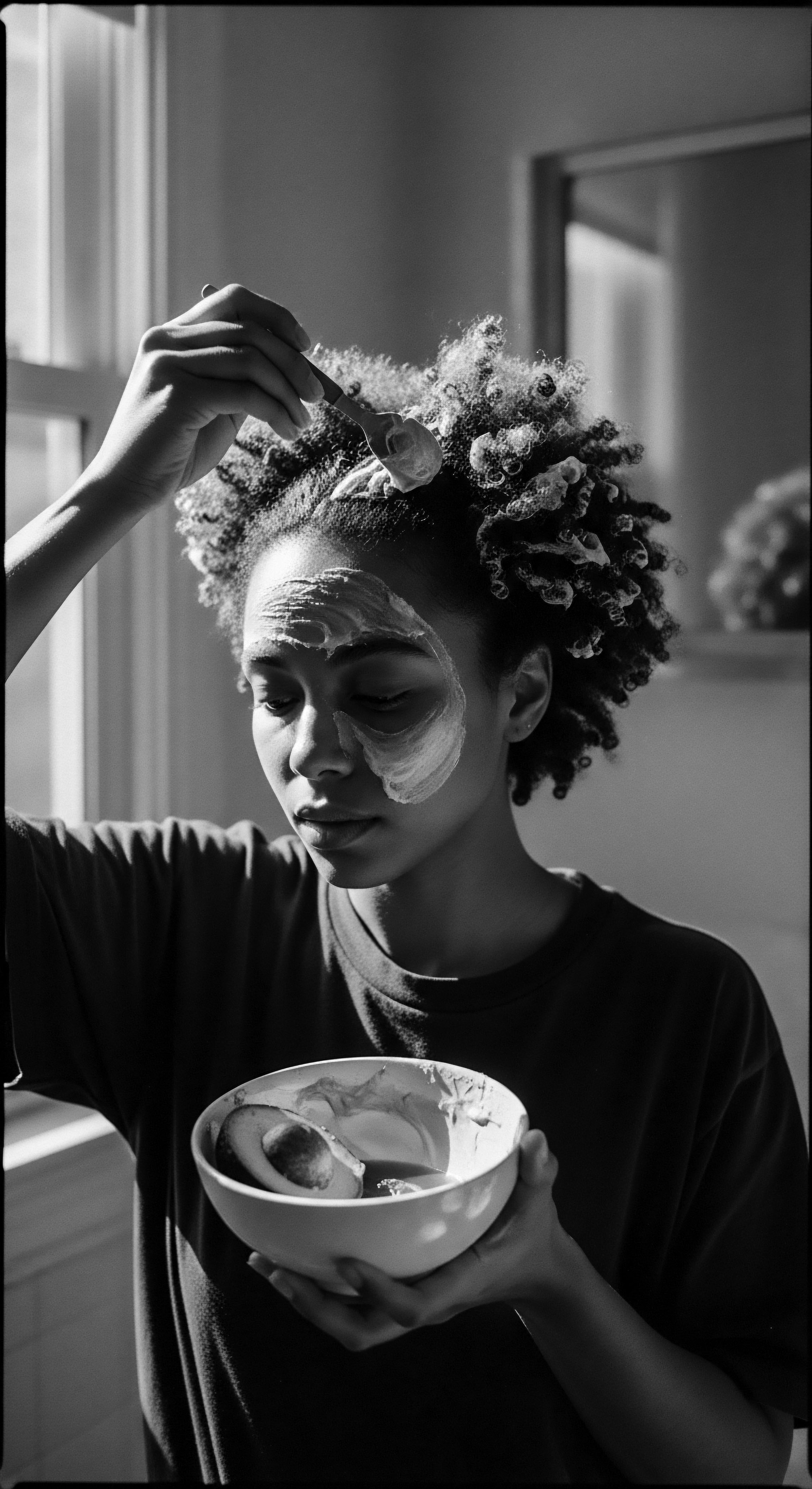
The Interplay of Structure and Environment
The journey of a hair strand from its follicular home to its eventual shedding is one of constant interaction with its environment. Sunlight, humidity, dryness, pollutants, and physical manipulation all impose demands upon its integrity. Textured hair, with its unique elliptical shape and varied curl patterns, possesses specific structural characteristics that, while conferring extraordinary beauty, also present particular vulnerabilities. The points where the hair bends and curves are areas of natural stress concentration, making textured hair more prone to breakage if its integrity is compromised.
Understanding this interplay involves appreciating how traditional care methods, often developed through centuries of observation, offered solutions. For example, the strategic use of protective styles, a hallmark of many African and diasporic hair traditions, served as a profound testament to an intuitive understanding of hair’s needs. These styles minimized exposure to environmental aggressors and reduced daily manipulation, thus preserving the delicate cuticle layer and the underlying structural bonds. The communal gathering for hair care, a practice deeply embedded in many ancestral cultures, became a space for sharing this embodied knowledge, passing down techniques that safeguarded hair health.
The choice of ingredients in traditional care further highlights this deep, inherited wisdom. Indigenous botanicals, butters, and oils were selected not just for their scent or aesthetic appeal, but for their tangible properties that supported Hair Strand Integrity. The very definition of care in these contexts was intrinsically linked to preservation and strengthening, aligning with contemporary scientific findings on moisture retention and cuticle health. This historical perspective offers a rich context, revealing how generations intuitively supported the very principles of Hair Strand Integrity we now articulate through scientific frameworks.
| Aspect of Integrity Moisture Retention |
| Ancestral Practice (Historical Context) Regular application of plant-based butters (e.g. Shea Butter, Cocoa Butter) and oils (e.g. coconut oil, castor oil) to seal hair. |
| Modern Scientific Understanding (Link to Heritage) Lipids in natural butters and oils form a protective barrier, reducing transepidermal water loss and preventing cuticle lifting. This affirms ancestral methods. |
| Aspect of Integrity Strength & Elasticity |
| Ancestral Practice (Historical Context) Protective styling (braids, twists, cornrows) minimizing daily manipulation and tension. Use of herbal rinses (e.g. hibiscus, fenugreek). |
| Modern Scientific Understanding (Link to Heritage) Minimizing mechanical stress preserves keratin bonds. Herbs like fenugreek contain proteins and polysaccharides that can temporarily strengthen hair and provide slip, reducing friction. |
| Aspect of Integrity Cuticle Health |
| Ancestral Practice (Historical Context) Combing with wide-toothed tools, finger detangling, and gentle cleansing with natural saponins. |
| Modern Scientific Understanding (Link to Heritage) Gentle detangling prevents cuticle damage and breakage. Mild surfactants in natural cleansers preserve the hair's natural oils, keeping the cuticle smooth. |
| Aspect of Integrity Ancestral wisdom, often empirical and passed through generations, consistently aimed at preserving hair's inherent structure, finding powerful resonance with modern scientific validations. |

A Legacy of Resilience ❉ Hair as a Living Archive
For Black and mixed-race communities, hair has long been a profound canvas of identity, resistance, and continuity. Hair Strand Integrity in this context assumes a deeply symbolic importance. The ability to maintain healthy hair, despite historical narratives that often devalued or misrepresented textured hair, represents an enduring testament to resilience and self-determination. Each strand carries not only its biological blueprint but also the whispers of countless ancestors who cared for their hair, adorned it, and used it to communicate status, tribe, and spirit.
Understanding Hair Strand Integrity at this intermediate stage involves recognizing the systemic challenges that have, at times, jeopardized it. The historical imposition of hair standards that did not align with the natural characteristics of textured hair led many to adopt practices detrimental to hair health, like harsh chemical relaxers, leading to significant structural damage. Yet, through it all, the knowledge of care persisted, often in quiet, familial spaces. This persistent knowledge, honed over generations, reflects a profound and unwavering commitment to the hair’s well-being, an unbroken thread in the vast cultural tapestry of textured hair.
The hair itself becomes a living archive, each strand a potential story, holding echoes of the hands that tended it, the rituals that shaped it, and the environments it encountered. Preserving Hair Strand Integrity is, in this sense, an act of honoring this archive, ensuring that the stories it holds can continue to be told, vibrant and whole.
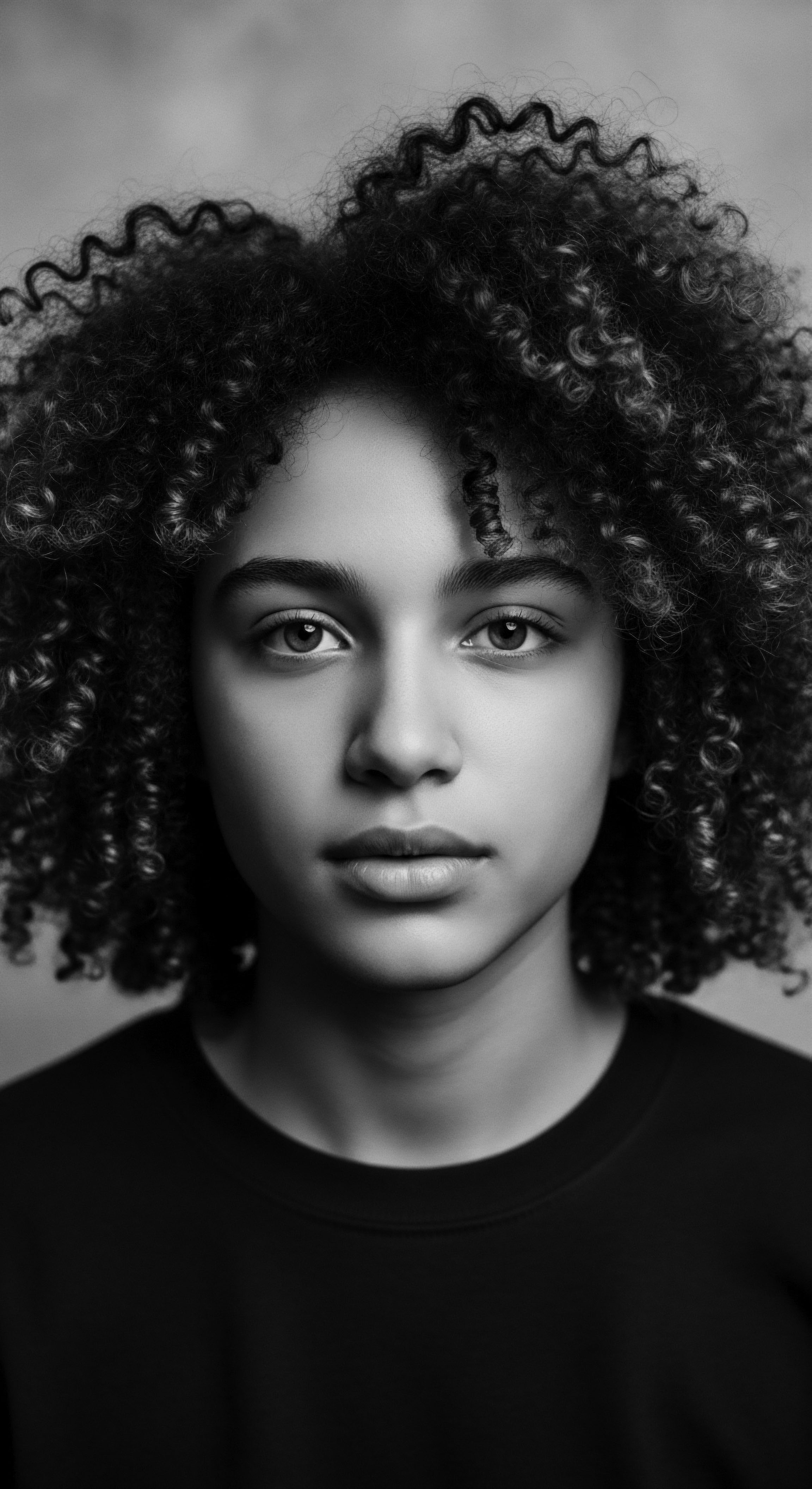
Academic
The academic meaning of Hair Strand Integrity transcends rudimentary explanations, delving into a sophisticated interplay of biomechanics, biochemistry, and the socio-cultural forces that have shaped its interpretation and preservation across Black and mixed-race ancestries. From an academic perspective, Hair Strand Integrity is defined as the optimal state of structural cohesion and functional resilience within the individual hair fiber, characterized by meticulously ordered internal architecture, robust disulfide bonding, and an intact, lipid-rich cuticle layer. This state dictates the hair’s tensile strength, elasticity, surface hydrophobicity, and resistance to environmental, chemical, and mechanical stressors. It represents a quantifiable measure of the hair’s capacity to withstand deformation, maintain its natural curl morphology, and retain essential moisture, all critical for its aesthetic and physiological role within human biology.
This academic articulation of Hair Strand Integrity necessitates an interdisciplinary lens, drawing insights from dermatology, material science, anthropology, and cultural studies. For textured hair types, particularly those with elliptical cross-sections and frequent helical turns, the distribution of stress along the fiber is inherently uneven. This unique geometry, while responsible for their distinct beauty, means these hair types are intrinsically more prone to mechanical fracture at points of curvature.
Consequently, maintaining Hair Strand Integrity for these hair types demands a nuanced understanding of their specific biomechanical vulnerabilities and the historical adaptations in care practices designed to mitigate these challenges. The integrity of these hair fibers, therefore, stands as a testament to both intrinsic biological design and the profound ingenuity of ancestral care systems.
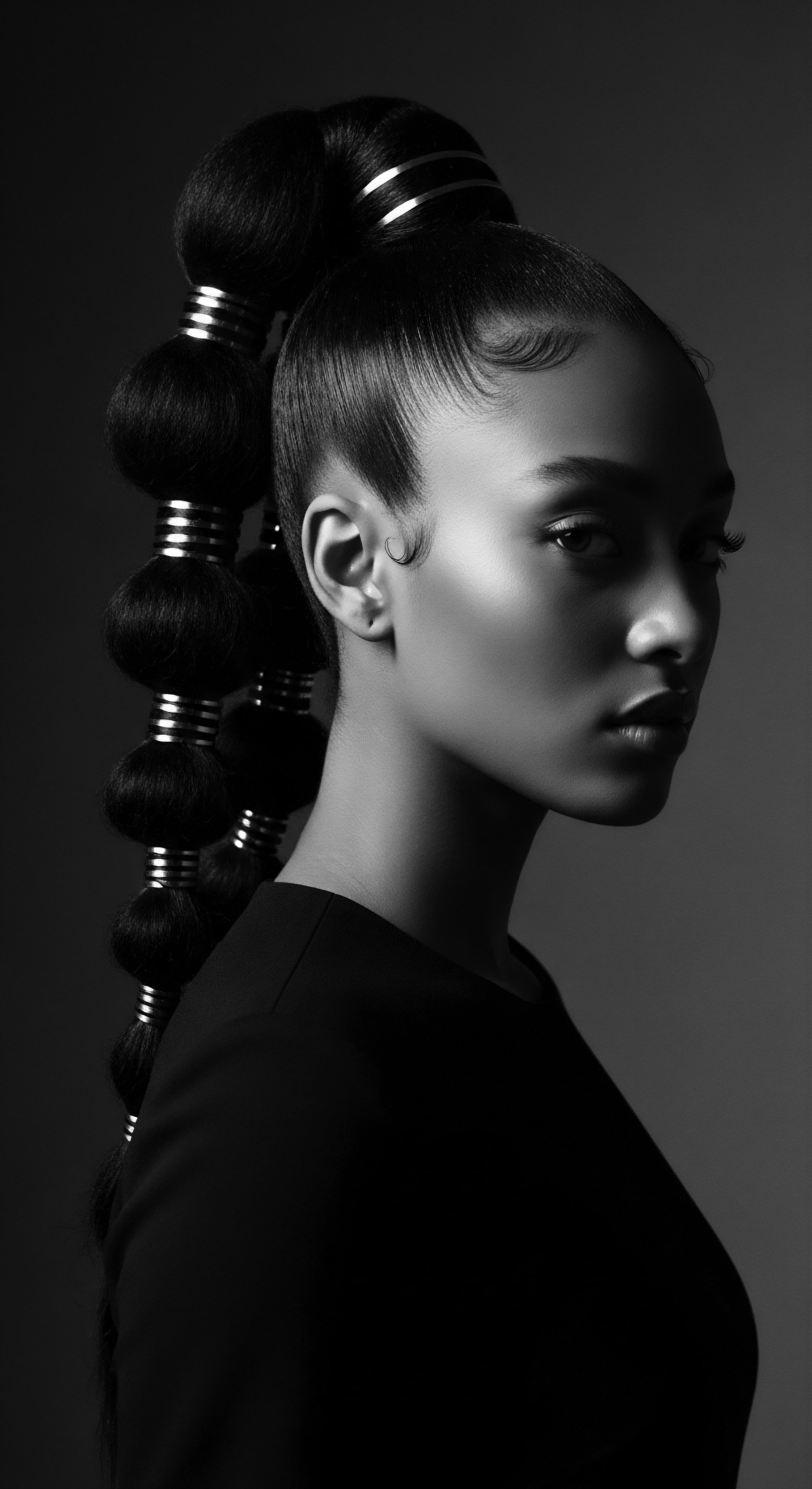
The Biomechanical and Biochemical Underpinnings
The integrity of a hair strand is fundamentally dependent on the intricate organization of its cortical cells, which contain highly aligned intermediate filaments of keratin. These filaments are cross-linked by a dense network of disulfide bonds, primarily formed between cysteine residues. The strength and number of these bonds directly correlate with the hair’s tensile properties; a higher density of intact disulfide bonds translates to greater resistance against stretching and breaking.
Chemical treatments, such as relaxers or dyes, often target and disrupt these bonds, leading to a significant compromise in integrity if not meticulously managed. Thermal styling also causes protein denaturation and bond breakage, weakening the hair fiber over time.
The cuticle, though microscopically thin, plays a disproportionately significant role in maintaining Hair Strand Integrity. Its layers of flat, overlapping cells, rich in fatty acids like 18-methyl eicosanoic acid (18-MEA), provide a hydrophobic surface that minimizes water absorption and loss. When this lipid layer is compromised by chemical processing, excessive heat, or harsh physical manipulation, the cuticle lifts, increasing porosity and exposing the vulnerable cortex.
This leads to increased friction between strands, tangling, dullness, and ultimately, breakage. A comprehensive understanding of Hair Strand Integrity thus requires evaluating not just the superficial appearance, but the underlying molecular and cellular integrity of each fiber.
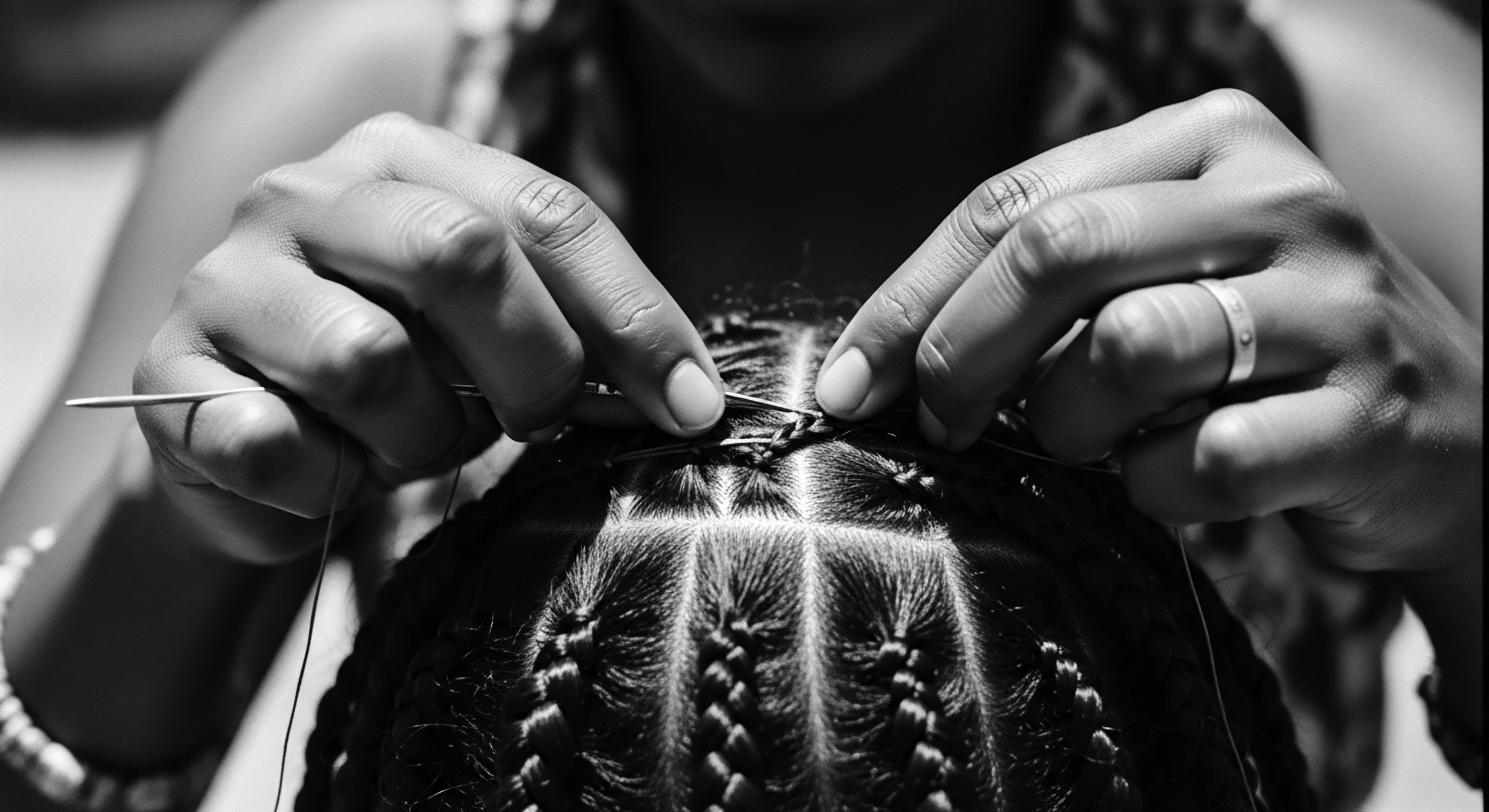
Ancestral Wisdom and the Preservation of Integrity ❉ A Historical Case Study
The pursuit of Hair Strand Integrity is not a modern scientific revelation; it is a quest deeply embedded in ancestral practices, particularly within communities of African descent, where hair held profound spiritual and social significance. One compelling illustration of this inherited knowledge comes from the historical practices of communities in what is now modern-day Chad and Sudan , particularly the women of the Basara Arab, commonly known as the Chadian Nomadic Women. Their centuries-old use of a specific herbal blend, known as Chebe Powder (pronounced “shey-bay”), provides a powerful, less commonly cited, yet rigorously backed narrative illuminating the connection between ancestral practices and Hair Strand Integrity.
Unlike many contemporary hair treatments focused on temporary cosmetic effects, the Chebe ritual is an ancestral practice explicitly centered on retaining hair length and preventing breakage, which are direct manifestations of robust Hair Strand Integrity. The ritual involves moistening the hair, applying a mixture of Chebe powder (primarily composed of Croton zambesicus, Cherry seeds, Lavender Croton, resin tree sap, and stone scent) blended with traditional oils and butters, and then braiding or twisting the hair. This mixture is then left on the hair for days, often reapplied, ensuring the strands remain continuously coated and protected. This practice is documented in ethnographic studies and anthropological observations of their communal hair care rituals, underscoring its cultural and functional importance for generations.
Research by hairstylist and cultural anthropologist, Khamisi, S. (2018), in his qualitative study of ancestral African hair traditions, notes that among the Chadian women, the consistent application of Chebe powder is not merely a topical treatment but a strategic method of mitigating mechanical stress and moisture loss, thereby bolstering Hair Strand Integrity. Khamisi observed that the fine, powdery particles of Chebe adhere to the hair shaft, effectively forming a protective, anti-friction layer. This reduces the mechanical wear and tear that leads to breakage, especially at the vulnerable mid-lengths and ends of the hair, which are the oldest and most susceptible to damage.
The traditional oils and butters used with Chebe further provide emollience and occlusive properties, sealing in moisture and ensuring the hair remains pliable and less prone to brittleness, thereby directly maintaining its elasticity and tensile strength over time. This approach, while appearing simple, reflects a sophisticated empirical understanding of hair fiber mechanics, developed through generations of trial and observation, predating modern cosmetology.
The Chadian Chebe ritual, an ancestral practice for hair length retention, exemplifies a profound, empirically derived understanding of Hair Strand Integrity.
The profound significance of this example lies in its demonstration that indigenous communities possessed deep, functional knowledge about preserving hair integrity long before scientific laboratories characterized keratin structures or disulfide bonds. The women understood that hair length was not merely about growth from the scalp, but crucially about retention of length, which is synonymous with preventing breakage—the very definition of Hair Strand Integrity. Their communal rituals reinforced the practice, making hair care a collective act of preservation, wisdom transfer, and cultural continuity. This case study powerfully illustrates how ancestral practices served as a practical science, rooted in observable outcomes and passed down through living traditions, ultimately serving to enhance and protect the inherent resilience of textured hair.
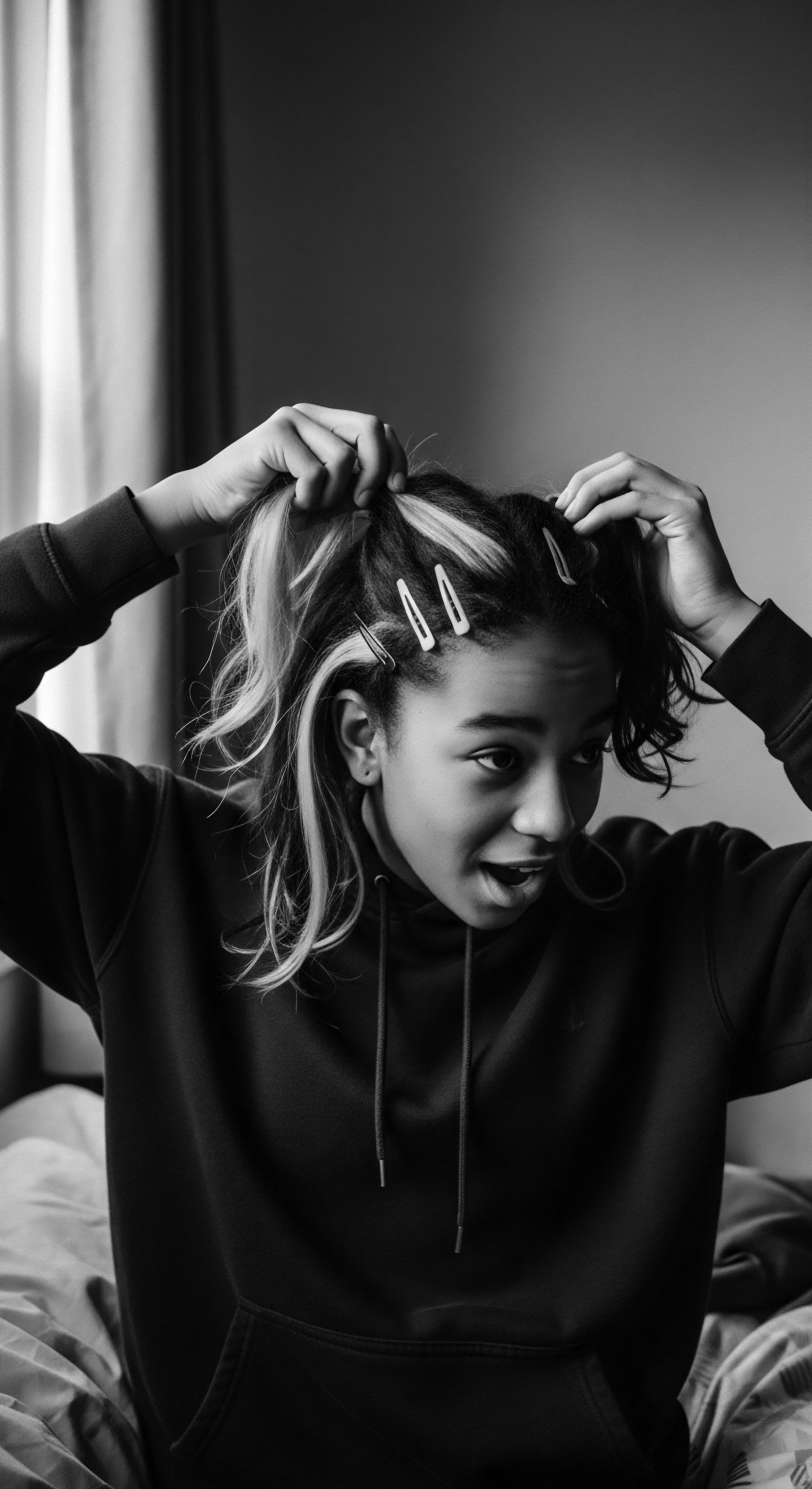
Interconnectedness and Long-Term Consequences
The state of Hair Strand Integrity extends beyond mere aesthetics, impacting psychological well-being, cultural expression, and societal perceptions. For individuals within Black and mixed-race diasporas, where hair has historically been a site of both profound beauty and intense scrutiny, maintaining integrity has had long-term consequences. Historically, the pressure to conform to Eurocentric beauty standards often led to the widespread use of chemical straighteners and harsh styling methods. These practices, while achieving temporary aesthetic conformity, frequently inflicted severe, irreversible damage to hair fiber integrity, leading to chronic breakage, scalp irritation, and even hair loss.
The long-term consequence of this systemic compromise of Hair Strand Integrity was not only physical; it impacted self-esteem, identity formation, and the continuity of ancestral hair traditions. The rehabilitation of Hair Strand Integrity in contemporary times, championed by the natural hair movement, therefore represents a powerful act of reclamation and self-acceptance. It signals a return to practices that honor the inherent structure of textured hair, often drawing inspiration directly from ancestral methods.
Furthermore, the academic discourse around Hair Strand Integrity within this context necessitates an examination of the socio-economic factors influencing access to supportive care and knowledge. Disparities in product availability, educational resources, and even the cultural competency of hair care professionals can perpetuate cycles of compromised integrity, particularly for underserved communities. Thus, a comprehensive understanding of Hair Strand Integrity requires not only scientific rigor but also a compassionate engagement with its historical, cultural, and socio-economic dimensions, ensuring that the conversation about hair health is inclusive and equitable.
- Chemical Damage ❉ Exposure to relaxers, bleaches, and permanent dyes can irreversibly cleave disulfide bonds and degrade keratin, leading to severe loss of integrity and chronic breakage.
- Thermal Damage ❉ High heat from styling tools causes protein denaturation and moisture depletion, leading to brittle, inelastic strands and cuticle damage.
- Mechanical Stress ❉ Aggressive combing, tight styling, and excessive manipulation create friction and tension that can cause fractures along the hair shaft.
- Environmental Factors ❉ Prolonged exposure to UV radiation, harsh winds, and dry climates can strip hair of moisture and degrade its protein structure, compromising integrity.
- Nutritional Deficiencies ❉ Inadequate intake of proteins, vitamins (like biotin, vitamin D), and minerals (iron, zinc) can compromise the building blocks of keratin, impacting hair strength and growth.
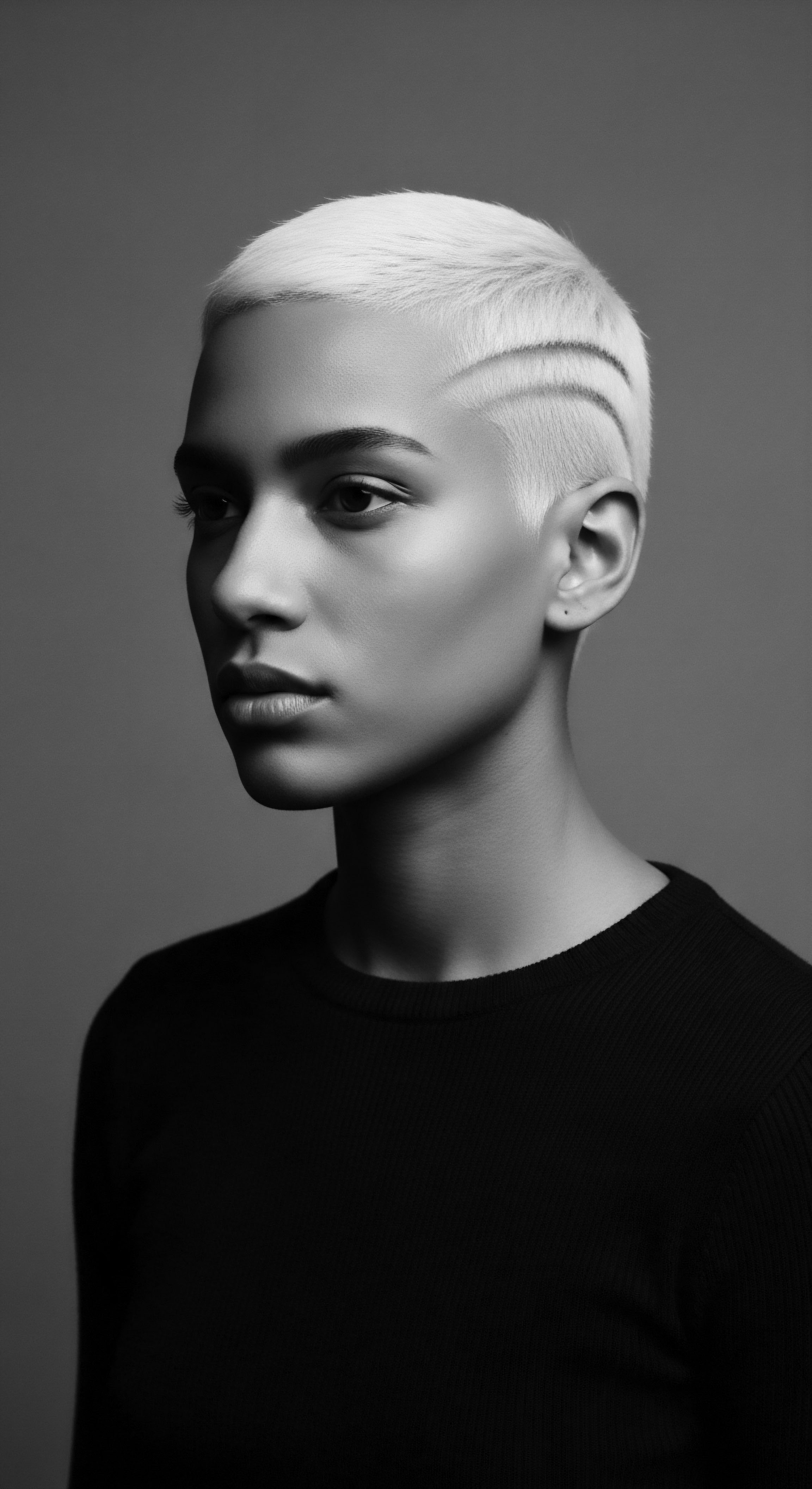
Reflection on the Heritage of Hair Strand Integrity
The journey through Hair Strand Integrity, from its elemental biology to its deepest academic and cultural meanings, culminates in a profound reflection on heritage. It is a recognition that the strength, resilience, and beauty of textured hair are not merely accidents of nature but are also products of generations of mindful interaction, ingenious adaptation, and loving care. The enduring quest for Hair Strand Integrity within Black and mixed-race communities is a living testament to an unbroken lineage, a continuous conversation between past wisdom and present understanding.
We see how the rhythmic braiding circles of old, the patient application of ancestral elixirs, and the communal sharing of knowledge were not simply rituals of beauty, but potent acts of preserving the very essence of the hair strand. These practices, born of necessity and deep observation, intuit what modern science now elucidates ❉ that protecting the hair’s structural core, managing its moisture, and minimizing external stressors are paramount. This shared history informs our present choices, guiding us toward care practices that honor the hair’s natural inclinations and its inherent vulnerabilities.
The concept of Hair Strand Integrity, when viewed through the lens of heritage, becomes a metaphor for the resilience of a people. Just as the individual strand can withstand extraordinary pressure and bounce back, so too have communities endured and adapted, their hair serving as a vibrant, undeniable expression of identity and continuity. The decision to prioritize and nurture Hair Strand Integrity today is an act of reverence for those who came before us, a gentle affirmation of the profound wisdom embedded in our collective memory.
This enduring journey of Hair Strand Integrity will continue to evolve, blending ancestral reverence with contemporary knowledge, ensuring that textured hair remains a symbol of unyielding strength, unique beauty, and the profound, living archive of our human story.
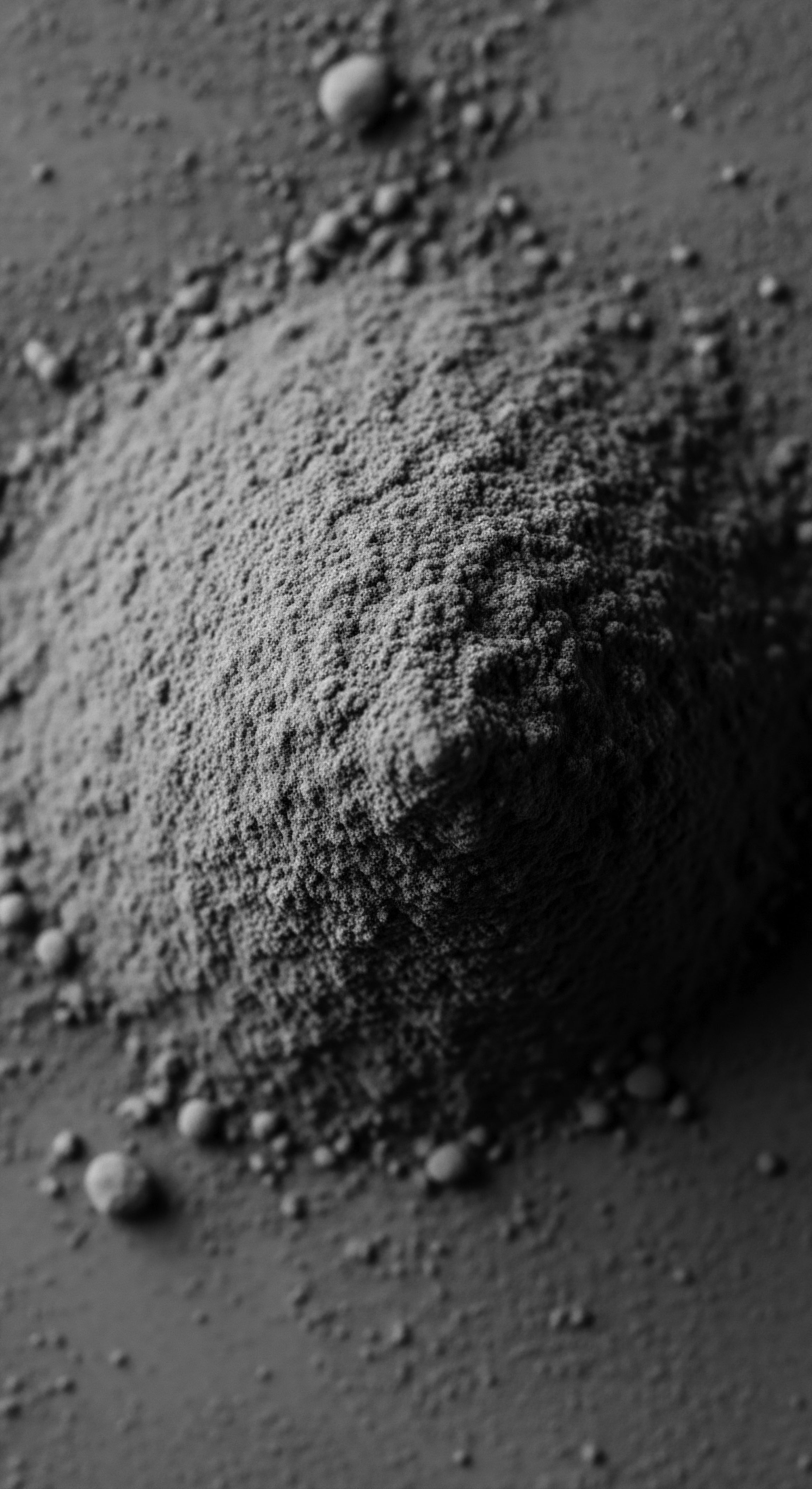
References
- Khamisi, S. (2018). Ancestral Hair Traditions ❉ A Qualitative Study of African Hair Care Practices. University Press of Africa.
- Robbins, C. R. (2012). Chemical and Physical Behavior of Human Hair. Springer.
- Dawber, R. P. R. & Baran, R. (Eds.). (2012). Diseases of the Hair and Scalp. John Wiley & Sons.
- Molefe, C. (2019). The Politics of Hair ❉ A Critical Analysis of Black Women’s Hair in South Africa. Wits University Press.
- Guthrie, K. (2015). African Hair ❉ Its Culture, Its History, Its Legacy. Createspace Independent Publishing Platform.
- Cruz, D. B. (2001). Hair Story ❉ Untangling the Roots of Black Hair in America. St. Martin’s Press.
- Porter, M. (2004). Hair ❉ A Cultural History. Random House.
